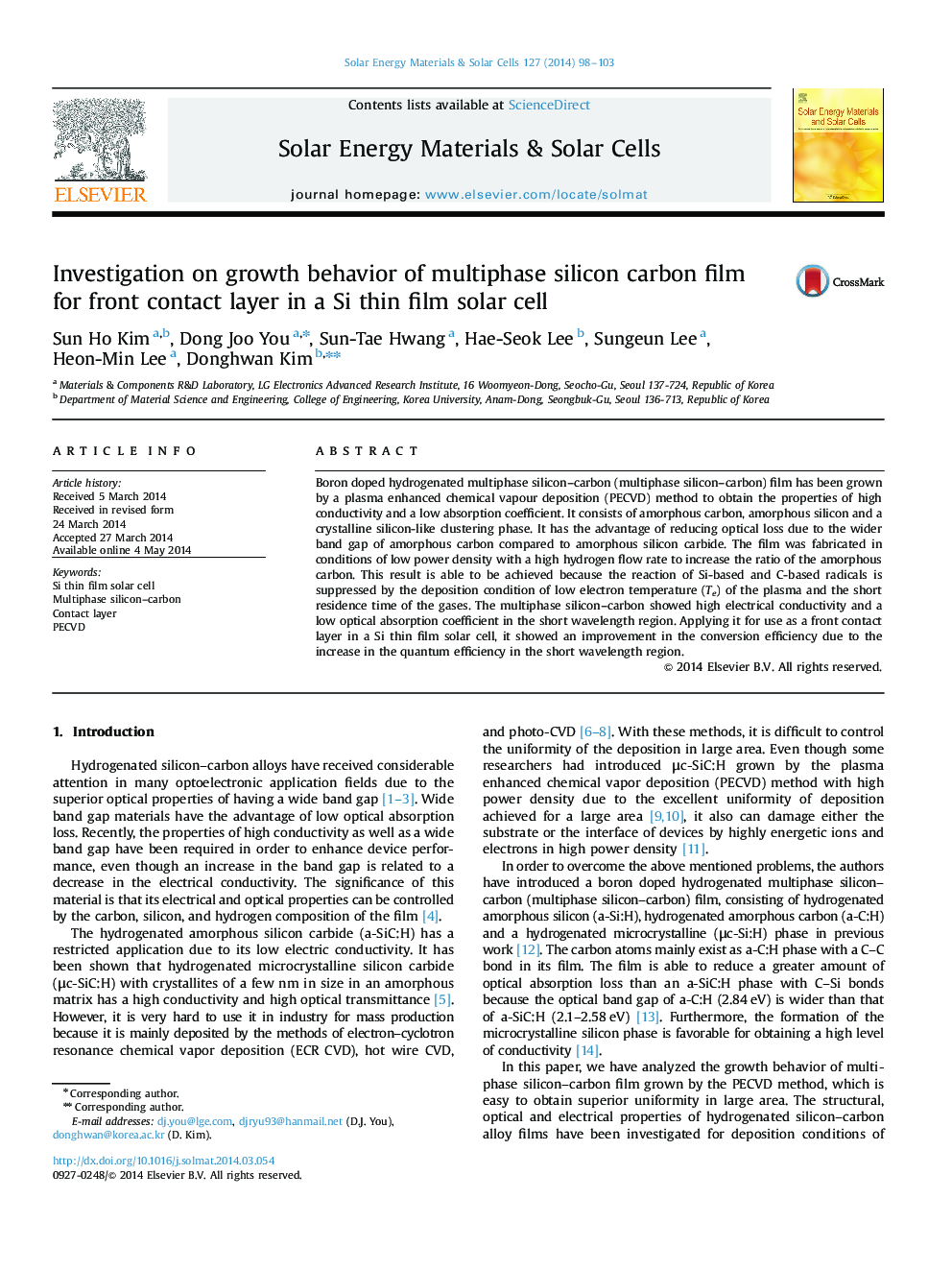| Article ID | Journal | Published Year | Pages | File Type |
|---|---|---|---|---|
| 78136 | Solar Energy Materials and Solar Cells | 2014 | 6 Pages |
•Boron doped hydrogenated multiphase silicon–carbon film has been grown by PECVD.•It consists of amorphous carbon, amorphous silicon and a micro-crystalline silicon.•It showed high electrical conductivity and a low optical absorption coefficient.•It showed the increase of quantum efficiency in the short wavelength region.
Boron doped hydrogenated multiphase silicon–carbon (multiphase silicon–carbon) film has been grown by a plasma enhanced chemical vapour deposition (PECVD) method to obtain the properties of high conductivity and a low absorption coefficient. It consists of amorphous carbon, amorphous silicon and a crystalline silicon-like clustering phase. It has the advantage of reducing optical loss due to the wider band gap of amorphous carbon compared to amorphous silicon carbide. The film was fabricated in conditions of low power density with a high hydrogen flow rate to increase the ratio of the amorphous carbon. This result is able to be achieved because the reaction of Si-based and C-based radicals is suppressed by the deposition condition of low electron temperature (Te) of the plasma and the short residence time of the gases. The multiphase silicon–carbon showed high electrical conductivity and a low optical absorption coefficient in the short wavelength region. Applying it for use as a front contact layer in a Si thin film solar cell, it showed an improvement in the conversion efficiency due to the increase in the quantum efficiency in the short wavelength region.
